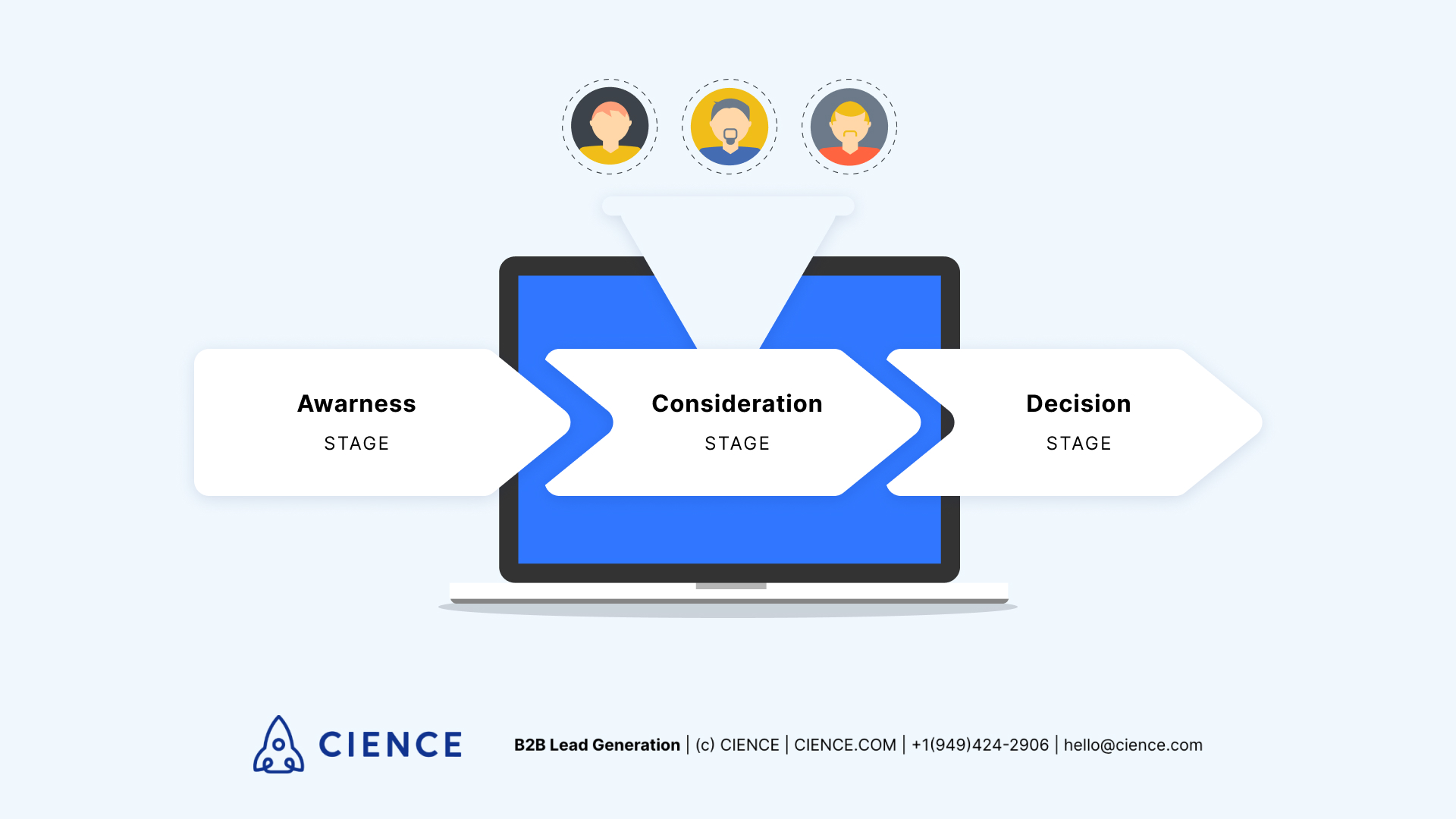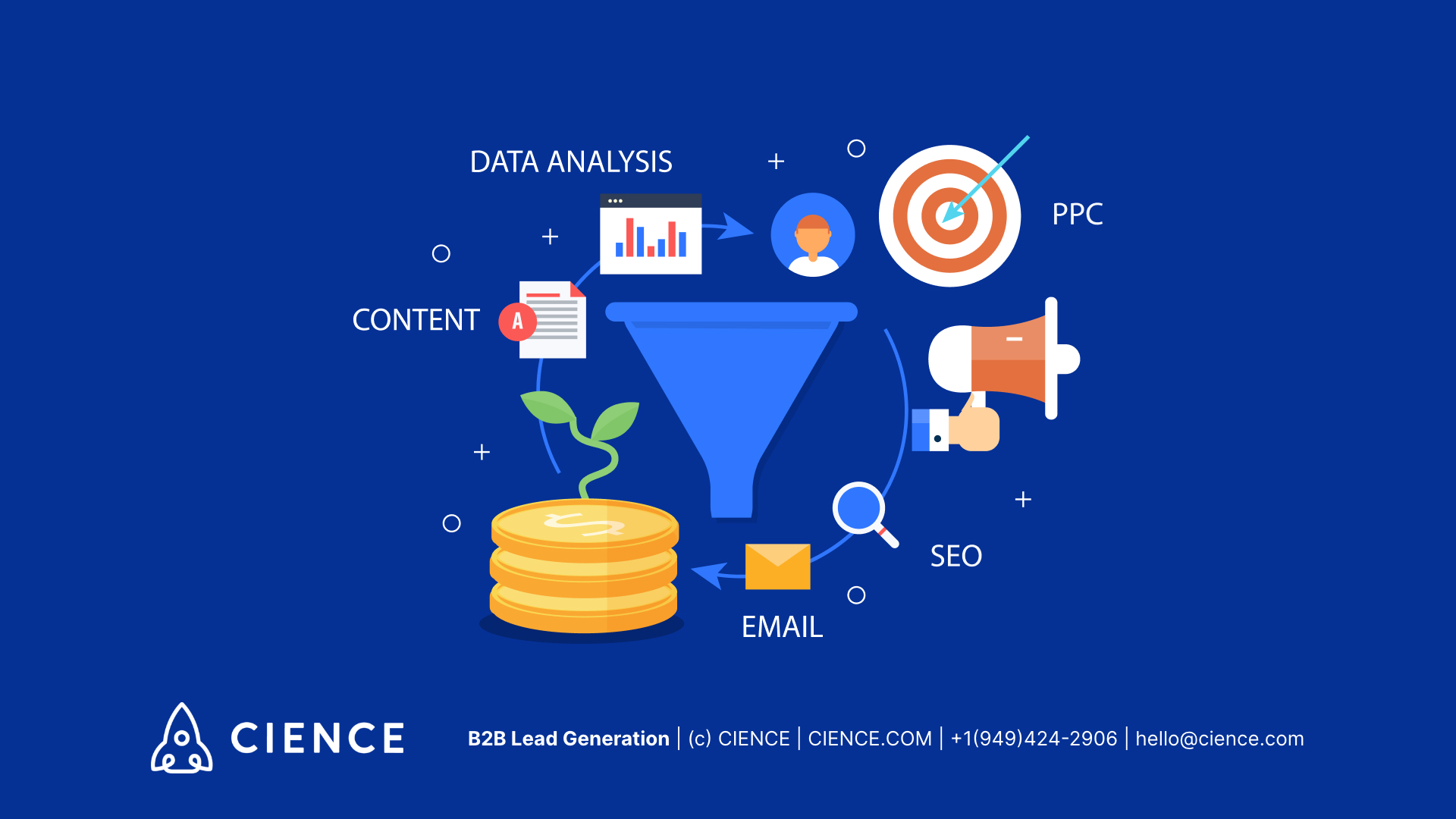4 Ways to Improve Customer Relationships in the B2B Sales Process
Building lasting relationships with customers is an important part of every sales strategy. It makes sure you don’t lose out on potential conversions and helps potential buyers to get to know your business. This is the time to inform, educate, and build trust with your prospects to convince them to buy your products or services.
Not everyone will make a split-second decision about purchasing something from you, and it’s your responsibility to help them over that threshold. Effective marketing and sales strategies can help you convert those indecisive leads into customers.
A great sales strategy doesn’t stop after purchase since you want people to buy from you again and become loyal customers. These are our tips on how to improve your sales funnel and the relationships you have with your customers.
Four Tips to Improve Customer Relationships
Very few people in the B2B arena simply decide to buy your product one day. It’s an entire journey where the customer shows interest, finds the right type of product, evaluates the competition, and in the end, decides on you. Nurture leads and build lasting relationships with customers using these four best practices:
1. Make a bulletproof content strategy.
You should never put all your eggs in one basket, but if you have the resources to only focus on one tip, then this is it. Your content is a great way to educate your customers on your brand, products, and services, as well as your industry in general.
You should take the opportunity to inform your customers on your own terms. The more you explain about your products—how they can be used, mixed, and what type of results they can bring—the more people will find you trustworthy.
Use this opportunity to become an authority in your profession. Brands that take a stance like this always seem more professional since they’re sharing a lot of educational content with their customers.
Blogs work amazingly for your SEO, but don’t rely exclusively on them. Create a content marketing strategy and invest in quality video content as well. Make sure to ask your audience for input to provide them with the content they like to consume.
Moreover, use testimonials and social proof to show real people benefiting from working with you. Don’t be afraid to create in-depth case studies or high-quality video marketing.
2. Define your buyer’s journey.
Great content is crucial in a sales process since potential clients will research your brand before buying. You can help them decide by pushing different types of content in different stages of the buyer’s journey.
It’s important to acknowledge that purchasing a product/service, especially in B2B, is a complex process. It can take months from when an idea about a purchase comes into a prospect’s mind until the moment they actually buy from you. This is why you need to split up this process (called a buyer’s journey) into smaller steps. For each step, you need a different approach and a lead nurturing strategy.
 Awareness
Awareness
At the awareness level of the buyer’s journey, a potential client will first make contact with your company, so you should give them educational content about your product or service. At this stage, people are searching for a solution to their problem and some are just learning that they can solve a problem they’re facing.
You should show that you understand your potential customers’ needs and clearly explain how your products or services are used.
Think of it this way, if someone is struggling with remote team productivity and they have no idea where to get started since they’ve just entered the world of remote work, they’ll start looking for a solution.
However, if they don’t know that there is a simple and cheap solution like a time tracking app, they won’t look into that—they’ll look into project management or team chat apps instead.
This is why it’s crucial to invest in brand awareness campaigns—to let your audience know that their problem is easy to solve. Moreover, they’ll see that others have the same problems and that a product is out there that can fix them.
That way, they won’t just learn about your product but also about the community of other people who are facing the same problems and working on them on a daily basis.
Consideration
From the awareness stage, your customers get promoted to the consideration stage. At this stage, they already understand how your product or service works and are considering whether to buy them or not. They may be comparing your brand to one of your competitors, so make sure you have content dedicated to explaining the difference between you and other available solutions on the market.
At this stage, you probably have a way to contact your lead because they subscribed to your newsletter or in some other way. Use this opportunity to entice them with a coupon code or any other benefit you have over all your competitors.
Decision
In the last stage of the buyer’s journey, you’ll have to play at the emotional benefit of purchasing your products or services. This is when you talk about the bigger picture and sell more than a product or service; this is when you sell a lifestyle and truly hone in your sales message.
In the end, it boils down to building a great sales funnel to build trusting relationships with customers. No matter what you sell and how, a funnel will give you a strategic view of your entire sales operation. It’s a great way to turn your sales into a structured, intentional process with clear-cut goals and obligations from your marketing and sales teams.
3. Use multichannel outreach.

Multichannel marketing means different things to different companies. If you’re a B2B company that offers large-scale solutions, you’ll need multichannel outreach, using appropriate channels like email and LinkedIn, to target the right audience.
For example, you can start communicating with a lead through LinkedIn, and once they show interest (and ideally, provide their email), you can continue communicating through emails. Here, you can send them personalized outreach messages or put them in an email sequence.
Alternatively, you can start from a different point, such as your website. If someone starts off communicating with you through your live chat, you can continue through email or some other medium you prefer.
You could even communicate with them through SMS if it suits your audience. This channel has excellent open rates compared to email and can be really useful.
Email marketing
With 59% of companies saying that they generate the most ROI from email marketing, it’s easy to see why it’s so widely used. The reason it works so well is because of the opportunity to customize it for your specific audience.
Every time you segment and personalize an email, you’re making it more suited toward one type of audience. In other words, it’s getting closer to writing an email from scratch from one person to another. Some benefits of personalization include a possible 760% increase in revenue, according to Campaign Monitor. Even just personalizing your subject line will improve your open rates.
Make your emails special by using your customer’s name, keeping them short and concise, making them mobile-first, and implementing a clear CTA.
Social media marketing
Unlike email, social media has a communal aspect to them, making it great for building a community. Facebook, Instagram, LinkedIn, and Twitter analytics let you target people based on their location, age, gender, interest, purchase history, and more.
This will help you find and reach your target audience, and once they buy something, you can retarget them and suggest other products that will go great with the one they bought. It’s important to find where your audience is spending their time and target them there.
One of the major uses of social media is the data it provides. You can easily analyze your entire audience there, including their age, location, job title, main preferences, and more. You can then use this information to create a more personalized approach when nurturing those leads instead of casting a wide net and trying to market to everyone with the same messaging.
4. Follow up quickly and analyze everything.
The speed at which you follow up with your leads is important in whether you’ll convert them or not. We suggest you incorporate automated lead nurturing in your sales process. A great example of this would be an automated email sequence based on the actions a lead makes once they’re in your CRM. This will help you contact leads as soon as they complete any type of session on your website.
Based on their browser history, you know exactly which product or service they’re interested in so you can easily target them with specific follow-ups that can offer more information on a certain product and get them to convert.
Every part of your sales process that could be tracked and measured should be analyzed to see if your efforts are worthwhile. Go through A/B testing, measure how many leads you converted in a month, count the number of new leads you attract to your funnel on a monthly basis, and more.
Only through testing will you be able to see what works for your brand and how to shape your sales and marketing strategy.
Build Your B2B Customer Relationships
Building solid customer relationships is a process, and it’s important to focus on converting as many leads as possible. With our tips, you can easily reevaluate your sales strategy and work out a way to improve the relationships with your customers.
A Few (Related) Sales Posts
 Read full post: Cold Leads vs. Warm Leads: Differences in B2B Outreach
Read full post: Cold Leads vs. Warm Leads: Differences in B2B Outreach
Cold Leads vs. Warm Leads: Differences in B2B Outreach
 Featured image: Leads vs. Prospects vs. Opportunities in B2B Sales Outreach - Read full post: Leads vs. Prospects vs. Opportunities in B2B Sales Outreach
Featured image: Leads vs. Prospects vs. Opportunities in B2B Sales Outreach - Read full post: Leads vs. Prospects vs. Opportunities in B2B Sales Outreach
Leads vs. Prospects vs. Opportunities in B2B Sales Outreach
 Read full post: B2B Lead Nurturing Guide: Best Practices to Turn Leads into Customers
Read full post: B2B Lead Nurturing Guide: Best Practices to Turn Leads into Customers
